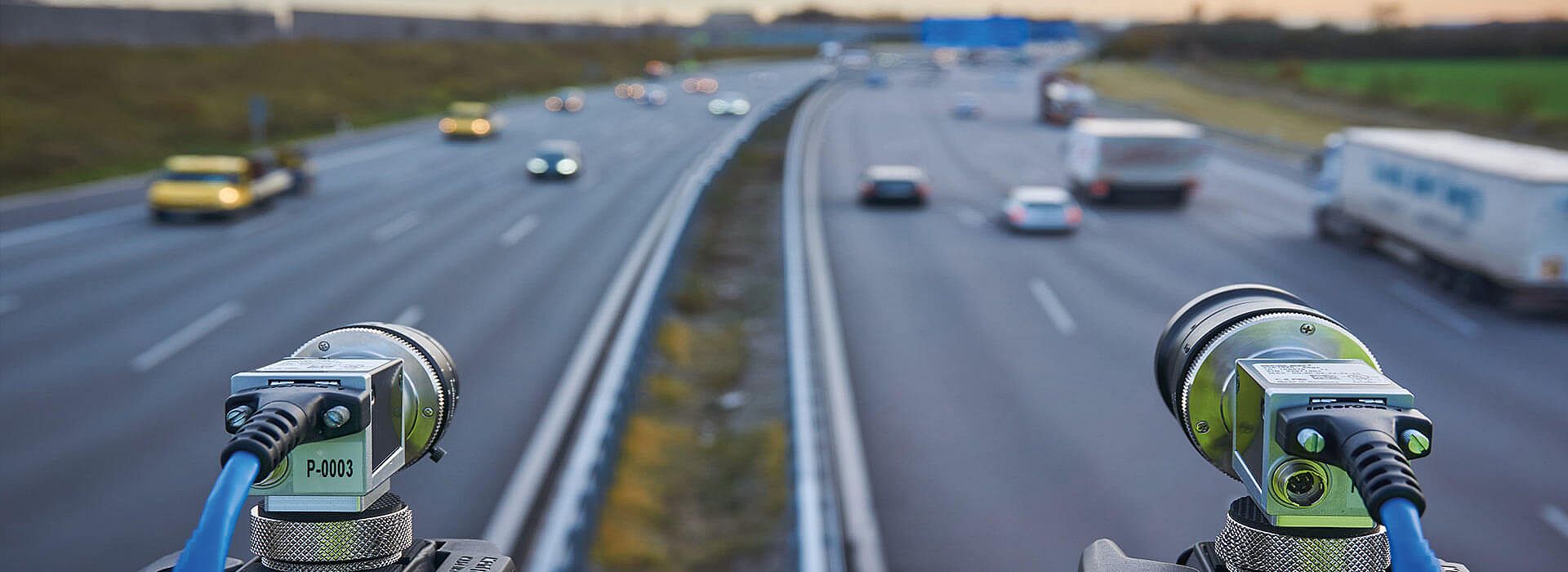Capturing sensor data from the highway in real-time: together with industry partners, fortiss has achieved this milestone on a digital test track on the A9 highway near Garching (Munich). In the Providentia project, the participants are conducting research into how to provide real-time traffic prognoses for highly-automated or autonomous vehicles on any stretch of highway to ensure better traffic flows and to avoid accidents. AI technologies for object detection and the future 5G wireless standard play an important role in the system. Another goal is provide the prognosis data via smartphone app to ensure that as many traffic participants as possible can benefit from the information.
What would be possible if sensors were installed not only in vehicles, but along the highway infrastructure as well? The answer: an overview of the traffic situation ahead, prognoses related to the driving maneuvers of drivers in front, instructions on how to circumvent traffic congestion or driving recommendations tailored to specific situations. It’s precisely these possibilities that the partners in the Providentia (Latin for outlook) project are researching on the digital highway test track.
As a first step however, the project team set up measurement stations on a stretch of highway near Garching (Munich) and used sensors such as short- and long-distance cameras, radar and lidar to monitor the traffic flow, vehicle speeds and driving behaviors. The measurement points are installed on highway signs or as masts on the side of the road.
In additional phases of the project, automated or autonomous vehicles will use their vehicle-to-X (V2X) receivers to process relevant information from the measurement points in real-time and make the data available to users. The partners in the Providentia project will examine how much data is needed to provide the traffic prognoses and ensure the functionality of safety-critical applications.
Digital twin
Researchers recently achieved the first milestone: the measurement technology and the Internet connection between the measurement points and a high-performance computer at fortiss’ main location is functioning reliably. The accumulated sensor data is anonymously analyzed, merged together in a centralized computer (sensor data fusion) and updated on a constant basis.
Computer scientists are currently in the process of developing the required software environment that will be used to analyze and compare the data sent by the sensors. The central computer also uses the data to create a digital twin of the stretch of highway, allowing the system to simulate the characteristics and capabilities of the digital infrastructure and optimize the measurement technology and infrastructure planning for use with other highway sections.
Calculating road curves with AI
The virtual representation of reality forms the basis of the capability to extract and interpret information from the merged sensor data, such as information about the vehicles and the distance between them. Computer experts are developing smart algorithms based on AI technologies that will be used for object detection or for calculating road curves (such as for conducting evasive maneuvers with autonomous vehicles).
In addition, the project participants will eventually be able to test the interaction between the sensors, V2X receivers and driver assistance systems. The next step would be the real-time visualization of important information on the windshield, a center console display or a mobile device
Consortium
The Providentia consortium project is led by fortiss. The participants include Deutsche Telekom AG, Huawei Technologies Co. Ltd., BMW AG, Rohde & Schwarz GmbH & Co. KG, IPG Automotive GmbH, Cognition Factory GmbH and Elektrobit Automotive GmbH. The partners are developing various technologies and conducting field tests in order to research and test the interaction of various information flows in highly-automated vehicles, as well as the communications and road infrastructure on the digital highway test track. The project is being funded by the Federal Ministry of Transport and Digital Infrastructure (BMVI) over a 2.5-year period (December 1, 2106 to June 30, 2019).
Highway digital test track
The digital highway test track between Nürnberg and Munich is operated by the BMVI in conjunction with the State of Bavaria, VDA and Bitkom. Companies and research institutes can use the test track to analyze new technologies designed for future traffic management systems. The focus is on automated and connected driving functions, as well as

